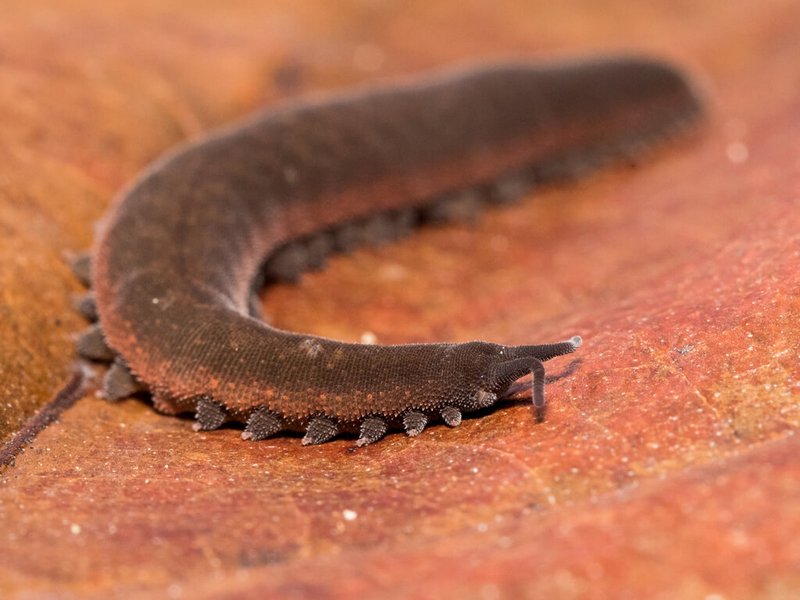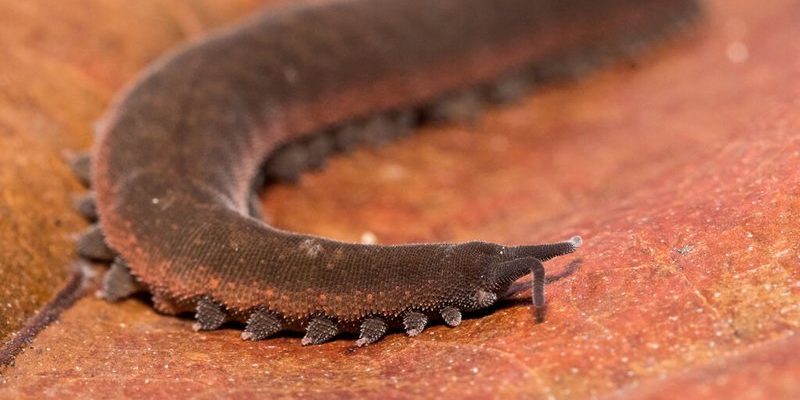
The velvet worm, part of the Onychophora phylum, is not exactly what most people picture when they think of “worms.” These fascinating creatures are thought to be ancient relatives of arthropods, which include insects and spiders. Their hunting behaviors offer an interesting look at how different species adapt to survive in the wild. Spiders, on the other hand, are well-known predators with their intricate webs and quick movements. Comparing the hunting techniques of these two groups is a fun way to better understand their roles in the ecosystem.
Velvet Worms: The Stealthy Predators
First off, let’s talk about velvet worms and their unique hunting style. Velvet worms (or *Peripatus*) are often found in damp environments, such as rainforests. They have a remarkable ability to blend into their surroundings, thanks to their soft bodies that are covered in a velvety texture. You might be wondering how they hunt in such an environment. Well, these little guys are ambush predators. They tend to lurk patiently, waiting for an unsuspecting prey to come too close.
Once they spot potential dinner—usually insects—they spring into action. Here’s where it gets really cool: velvet worms secrete a sticky slime from their specialized glands. This slime acts like glue, entangling their prey and making escape nearly impossible. Imagine throwing a ball of sticky tape to catch your snack—that’s similar to what they do! After immobilizing their catch, they use their powerful jaws to munch on their meal. This hunting technique is both efficient and effective.
How Velvet Worms Find Their Prey
So, how do velvet worms know where to find their next meal? They rely heavily on their keen senses. Velvet worms have a pair of antennae that help them detect vibrations and scents in their environment. This sensory input is crucial for locating prey, especially since they often hunt in low-light conditions. When they sense movement nearby, they quietly move in for the catch.
Their ability to camouflage and sense their environment makes them incredibly efficient hunters. Also, because they tend to hunt at night, they avoid many predators. This nocturnal hunting strategy allows them to thrive in their habitats without much competition. It’s almost as if they’ve perfected the art of stealth.
Spiders: The Web-Slinging Masters
Now let’s switch gears and look at spiders, the well-known arachnid hunters. Spiders belong to the class Arachnida and are famous for their silk-spinning abilities. Many species create webs that can be stunning in their complexity. But not all spiders rely on webs for hunting. Some, like the wolf spider, are active hunters, stalking their prey without any silk. Talk about versatility!
When it comes to hunting, spiders use a range of strategies depending on their type. The web-building spiders wait patiently for their prey to become ensnared in their sticky traps, while active hunters chase down their meals. For instance, a jumping spider can leap several times its body length to catch an insect—this requires both skill and precision.
The Role of Silk in Spider Hunting
Silk plays a vital role in how many spiders hunt. Web-spinning spiders create intricate structures designed to trap flying insects or crawling critters. The silk itself is incredibly strong and sticky, allowing spiders to successfully capture prey that might otherwise escape. Once trapped, the spider quickly immobilizes the captured victim with venom before consuming it.
Interestingly, spiders can also use silk for other purposes. For example, they may use silk lines to navigate their environment or even to parachute when young, allowing them to travel long distances. This adaptability is one of the reasons spiders are so successful as hunters in various habitats.
Comparative Hunting Techniques: Velvet Worms vs. Spiders
When you put velvet worms and spiders side by side, it’s clear that both have fascinating yet different hunting techniques. Velvet worms rely on ambush and their sticky slime to capture prey, while spiders often use webs or active hunting skills. This difference highlights the diversity in predator strategies within the animal kingdom.
Consider the time of day for hunting; velvet worms are predominantly nocturnal, stalking their prey under the cover of darkness. In contrast, many spider species are active during the day, using their webs to catch unsuspecting insects. Both creatures have adapted their behaviors to thrive in their respective environments, showcasing nature’s creativity in survival tactics.
While velvet worms may not have the same range of hunting techniques as spiders, they certainly hold their own in the predator world. Their slime-slinging abilities are nothing short of remarkable, and their patience pays off when they catch their meals. The contrast between their ambush style and the more dynamic methods of spiders makes for a compelling comparison of evolutionary tactics.
Ecological Importance of Both Creatures
Both velvet worms and spiders play significant roles in their ecosystems. They help control insect populations, which can impact plant life and overall biodiversity. Without these predators, the balance in their respective environments could be upset, leading to overpopulation of certain insect species.
Moreover, the hunting behaviors of both velvet worms and spiders influence the food web. They serve as prey for larger animals, including birds and reptiles. By understanding their hunting techniques, we can appreciate how these creatures fit into the larger picture of nature’s intricate design.
The Future of Velvet Worms and Spiders
Unfortunately, both velvet worms and certain spider species face challenges due to habitat destruction and climate change. Protecting their natural environments is crucial for their survival. Since these creatures offer valuable insights into ecological systems, preserving them helps maintain healthy ecosystems.
Researchers continue studying their behaviors, helping us understand the delicate balance of nature. By appreciating their unique hunting methods, we can take steps to protect their habitats and ensure their survival for future generations to observe and marvel at.
Final Thoughts: Why Understanding these Creatures Matters
In the end, comparing the hunting behaviors of velvet worms and spiders reveals just how diverse nature can be. Both creatures may not seem to have much in common at first glance, but their strategies showcase the myriad ways life adapts to survive. Whether it’s the stealthy ambush of a velvet worm or the careful weaving of a spider’s web, these hunting techniques remind us that there’s always something new to learn from the natural world.
So next time you come across a velvet worm or a spider, take a moment to appreciate their unique traits and the vital roles they play in our ecosystems. Understanding these fascinating creatures not only enriches your knowledge but also deepens your respect for the intricate tapestry of life on our planet.

